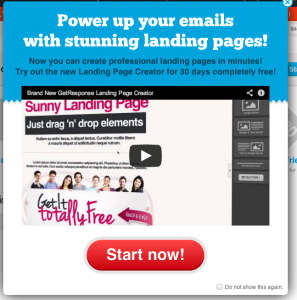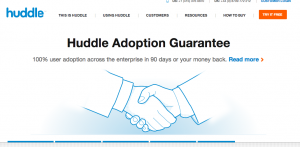I mentioned, “Expansion Revenue” and “Negative Churn” in my post SaaS Churn Rate: What’s Acceptable? and I wanted to expand on those concepts a bit.
But first…
UPDATE 1 : Dollar Revenue Retention – DRR – is the latest SaaS churn rate metric you need to know about (after you read this post, of course).
UPDATE 2: Actually, DRR isn’t the best metric. Net Revenue Retention – NRR – is. NRR is the “net” revenue left over from an existing cohort of customers, less any revenue churn (caused by customers leaving totally or staying, but paying less for the privilege), plus any expansion revenue from upsells, cross-sells, etc.
UPDATE 3: I’m so over the term “Negative churn.” Can we agree to call it Account Expansion?
"Negative Churn" is a term that needs to die.
— Lincoln Murphy (@lincolnmurphy) May 13, 2016
Okay, so back to the original points of this 2013 post – Expansion Revenue and “Negative Churn” (ugh, see above)… I honestly believe that fully grasping the power of these two concepts could change your SaaS business forever.
No pressure… but you might want to read this post carefully.
First, as far as I know, David Skok of venture capital firm Matrix Partners popularized the term “negative churn” in one of his fantastic SaaS metrics posts.
In that same post, David used the term “expansion revenue” to quickly identify any revenue generated in excess of the initial selling (or sign-up or contract) price.
And since Expansion Revenue is the key to Negative Churn, I’ll start there…
Offset SaaS Churn Rate with Expansion Revenue
As I said above, any revenue generated in excess of the initial selling (or sign-up or contract) price is considered Expansion Revenue.
Expansion revenue should be something you consider – and strive for – at every stage of your sales process, the Free Trial, during and immediately post-conversion, during on-boarding, and of course as the customer continues to use your service.
Remember, it’s a lot easier to get more money from a customer who’s happy and already paying you than it is to get money for the first time from non-customers. #fact
Whereas far too many SaaS marketers think “can I get someone to sign-up for a year in advance at a 50% discount” I would advise you to think more like “can I get someone who was going to sign-up at the $20/mo level to instead convert at the $30 or $40/mo level?”
In addition, consider how quickly you can get someone who converted at $50/mo to move up to the $100/mo level and be clear on what the path to that expansion revenue looks like.
BTW, at a high level, that path is: engagement ==> investment ==> offer ==> conversion ==> rinse & repeat.
Expansion Revenue Examples
When a customer initially signs-up at the $100/mo level but at the beginning of the second month of the subscription moves up to the $200/mo level, you now have $100 in expansion revenue every month.
And using that example, over the next 35 months of their 36-month estimated lifetime (eLT) would equal $3,500 in expansion revenue in addition to the $3,600 in base revenue for a gross Customer Lifetime Value (CLV) of $7,100.
That is unless you move them to the $300/mo level in month 6 as you have mapped out, right?
Look at what email marketing provider GetResponse shows when I logged-in to the dashboard… an up-sell for a 30-day trial of their $15/month Landing Page creator add-on.
For GetResponse, this add-on is worth an extra $180/year and is congruent with the needs of their customers (you need to send clicks from emails somewhere, right?). But wait… it gets better.
By providing a tool for their customers to create high-converting landing pages, the hypothesis would be that GetResponse customers will get more out of the core email service because their emails will be more effective, which also means they will stay around longer (reducing SaaS churn rate and resulting in a longer Customer Lifetime).
This success will also encourage the customers to actively grow their email lists (which is what the core GetResponse pricing model is based on), resulting in significantly expanded revenue and an increasing Customer Lifetime Value (CLV). Nice.
Other things to consider about expansion revenue…
If a customer enters your Free Trial having selected the $30/mo plan but converts at the $50/mo plan 14 days later, I would consider that expansion revenue from the beginning.
Since the higher initial selling price is directly attributable to your efforts to drive engagement and investment during the trial – making the up-sell compelling enough for the customer to take action – considering this expansion revenue makes total sense.
This, by the way, is just one reason why you should link every free trial sign-up to a pricing tier.
Of course expansion revenue doesn’t have to be recurring revenue.
For instance, if you offer a done-for-you report for $500 and the customer buys it, but remains at the $100/mo level, the expansion revenue is $500 and that figures into their total CLV. What else could you offer that is beyond the core service to expand revenue?
That all said, let me be clear… Expansion Revenue isn’t necessarily free money – there may be a cost, perhaps a substantial one – to create and deliver the additional service, but as long as the desired margins are there, not having a plan to expand revenue is quite simply a wasted opportunity.
However, expansion revenue – done correctly – can be very high-margin revenue because it’s just an up-sell to a higher priced tier that itself has a low cost to deliver.
So expansion revenue is awesome and should be the goal every step of the way.
In fact, expansion revenue is so awesome it can even lead to what is called “Negative Churn.”
Achieve a Negative SaaS Churn Rate
So having a Negative SaaS churn rate might seem like a confusing – almost counterintuitive – idea but it makes sense if you really understand what it is… which I hope you will after I’m through with you.
First, to get to the concept of Negative Churn we have to move from customer or “logo” churn – counting the number of customers that leave – to revenue churn, counting the number of dollars that leave.
I know the next question you’re going to ask… which is best to measure, revenue churn or customer churn? I’ll cover that in another post, but since revenue is always a key indicator of the health (along with profit) of your company, revenue churn should always be measured. And as you’ll see in a minute, dropping logos might be a way to restart a stagnating business!
Another distinction we need to make is gross vs. net churn, and it’s simple, too.
The number of dollars you lose – without regard for new, reactivated or expansion revenue – for a time period or cohort would be referred to as gross churn.
Net churn is the amount of dollars lost after taking into consideration new, reactivated, or expansion revenue for the same time period or cohort.
A great way to think of this is if you lose $100 through customer attrition and non-renewals (gross churn), but you gain $150 for the same period or cohort through expansion revenue (up-sells, cross-sells, higher usage, etc.) you have negative (net) churn of $50.
On a customer-basis (but still considering revenue), if out of 100 customers, you lose 10 (gross), but you are able to up-sell, cross-sell or drive additional usage from the 90 customers that are still there allowing you to generate more revenue from the 90 than you did the original 100, you have a negative net SaaS churn rate.
So even though you have churn, your revenue goes up. This is very good.
An Interesting Negative Churn Scenario
Here’s a scenario where Gross Churn is high but your overall SaaS Churn Rate is Negative… and it’s all orchestrated.
I frequently work with SaaS providers that don’t know who their ideal customer is… but they’re pretty sure none of their current customers fit that bill.
Typically these SaaS providers used the “everyone is our potential customer,” product-centric approach to marketing that for some reason is popular with SaaS providers.
Consequently, they’ve achieved the results that come from having no real plan; they’re not failing, but they’re not growing, either.
A little more bluntly… whatever growth they’ve achieved thus far is in-spite of their efforts rather than because!
So when they bring me in to help, the first thing we do is figure out a way to flip the script on that.
Initially, their “marketing strategy” attracted the wrong audience (low-end customers) and that isn’t good for anyone.
So after we’d do some buyer persona development and empathy mapping work and have a clear picture of their ideal customer, we’d change pricing to align with the value perception of the higher-end customers, change the sales funnel to match the way the ideal customer tries and buys, etc.
Then we’d figure out a way to market to the ideal customer correctly (this really is so much easier when you know who your potential customer is!) – even if in a smaller niche – and lo and behold we’d start getting “good” customers.
And since we know the customers better than they know themselves at this point, creating expansion revenue maps to move customers up the revenue ladder is much, much easier.
Now, depending on how “bad” the original customers were, we might actively jettison them or just allow natural attrition to occur with the initial less-than-ideal customers.
In this scenario – which may last a few months or more – you may find a substantial amount of gross churn (which you could even be promoting), but because you’re actively bringing on new customers at higher price levels and doing up-sells and cross-sells (where appropriate) early in the customer lifetime this expansion revenue will substantially offset the loss of revenue from the churn.
One note though before we move on… non-orchestrated churn is almost always bad. The ideas I’m putting forth here – especially around Expansion Revenue – are even more powerful if you have a low gross SaaS churn rate!
Okay, so this is all interesting… but what about Negative Churn in everyday operations?
Common Negative Churn Scenarios
First, the good news…
The most successful SaaS providers out there operate with a negative SaaS churn rate.
But let’s be absolutely clear… these companies have a low gross churn rate to begin with… the best companies operate in with less than 7% annual churn.
Their negative churn comes from their aggressive methods of getting customers engaged & invested in their service, driving initial use and expanding internal adoption. Yammer is a great example of well orchestrated “internal corporate virality” and Huddle is an example of a company that works hard to drive internal adoption and backs that up with a “100% Adoption in 90-Days” guarantee.
A Negative SaaS churn rate for these companies is possible because they’re really good at promoting additional use that requires more resources or additional functionality which expands revenue, as well as using up-sells and cross-sells to grow per-customer revenue.
Salesforce.com is a great example of a SaaS provider that scales its feature set with customer success and effectively cross-sells adjacent products and services like Data.com.
Okay, now the bad news…
In my experience, since SaaS providers with high churn rates simply don’t do the things necessary to reduce churn in the first place, they rarely do things necessary to expand revenue at all, let alone enough to overcome what is lost through churn.
From what I’ve seen, providers with an unacceptable SaaS churn rate don’t know how to – or for whatever reason simply choose not to – leverage up-sell, cross-sell, or even down-sell opportunities, so their churn rate is rarely offset by expansion revenue.





